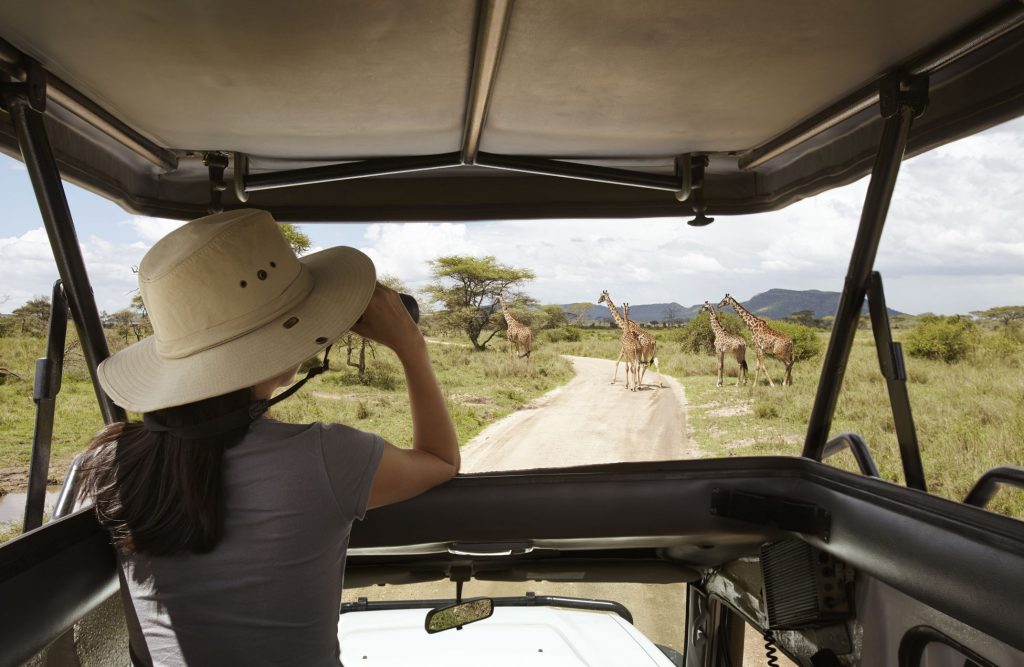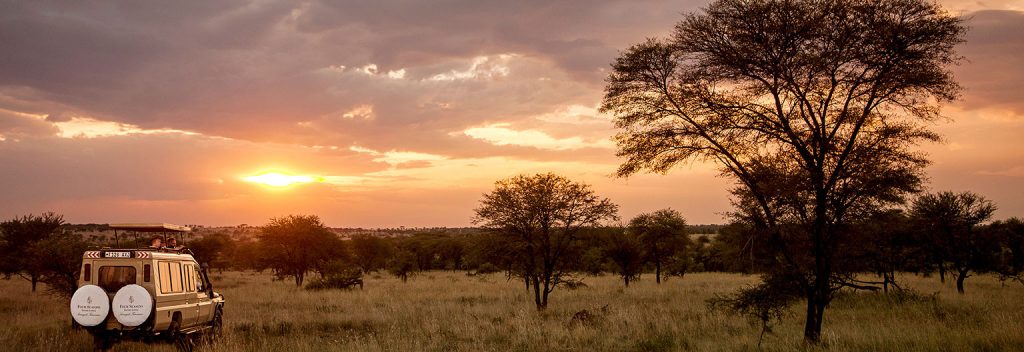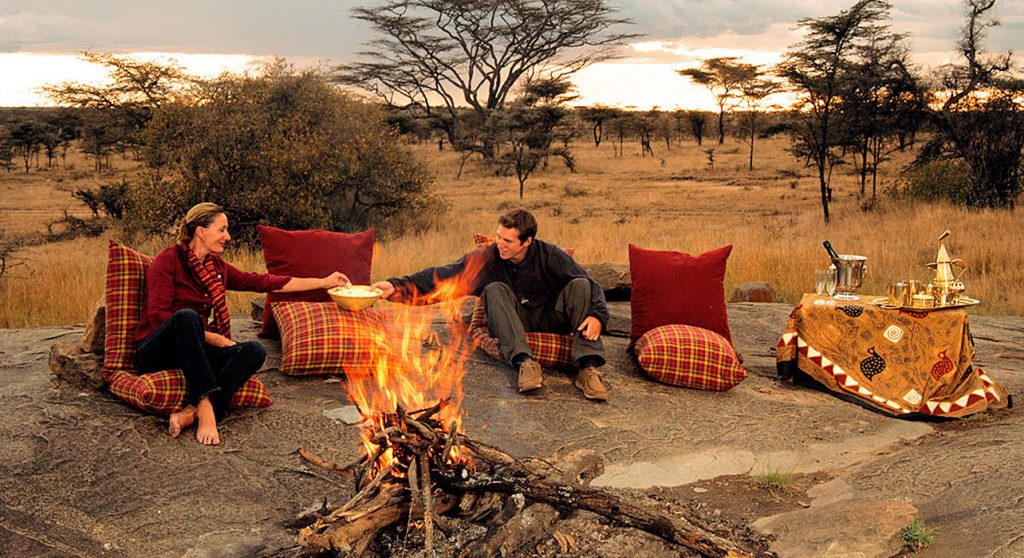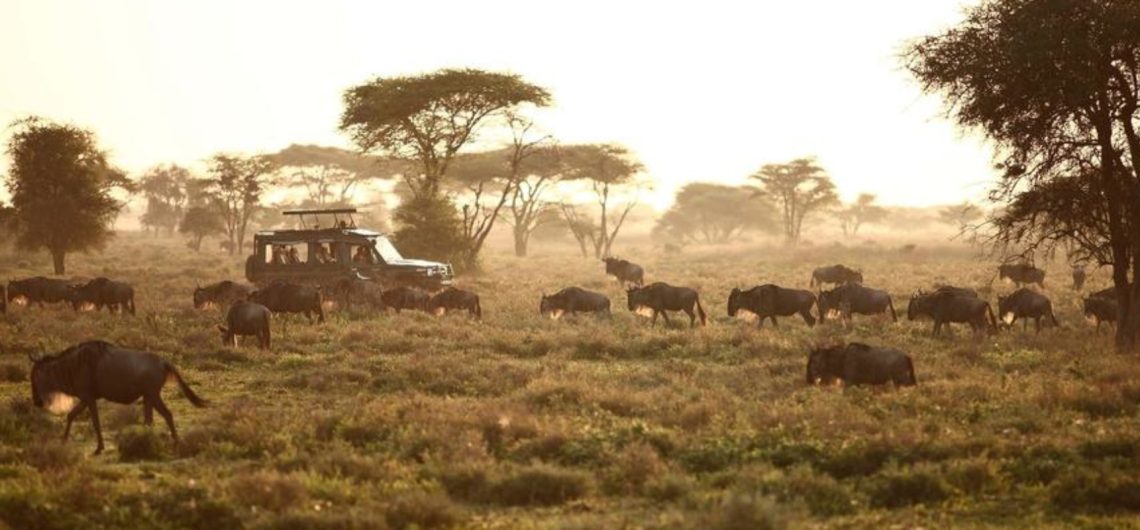An African safari – it sounds so romantic! The mind conjures up images of wonderful African sunsets, nights around the campfire and, of course, exciting close encounters with Africa’s wildlife. You may have it all pictured in your mind, but until you have actually been on Safari for the first time you will probably be wondering how you will be spending your time each day.
Before we go any further, I must just say that there is actually no such thing as a “typical” day on Safari, so our heading is a little misleading. Every time you step out of your tent or suite you will be embarking on a brand new adventure; every single excursion into the wilds holds the promise of a new and unique magical moment in Nature; every Lodge or Campsite has a different atmosphere and stunning location, making each and every Safari day different and special. Having said all that, there is a certain comforting routine to your days on safari, so for the benefit of all the first-timers, I will try to give you an idea of what to expect from your Game Drives and your Camps or Lodges.
Game Drives – What Exactly Is a Game Drive
For the uninitiated, I should perhaps explain what a “game drive” is! You will be taken out into the bush in a 4X4 game-viewing vehicle. Depending on whether you are on a group or private safari, this could be a large “truck” with 3 or 4 rows of seats, accommodating up to 10 people or you could be in a much smaller van for up to 6 people. (On some specialized photographic safaris the number of people per vehicle is limited to 1 person per row of seats, to provide optimum photographic opportunities).

A “typical” game drive will last about 2-3 hours, depending on what you come across along the way. At some destinations, you may be offered a full day game drive, which can take up to 8 hours. Your driver will be an experienced game ranger who knows the area exceptionally well and has a good idea of the best places to take you for good sightings.
Your open-sided or “pop-up” game viewing vehicle is not air-conditioned and there can be considerable differences in temperature during your drive, so dressing in layers is recommended. Don’t forget to bring your camera, binoculars, sunglasses, sunscreen and a hat. Drinking water will be available on the game drive, but you can bring some munchies if you like.
An African Safari is all about the wildlife; every aspect of your safari is geared towards giving you the very best experience possible, and that means that your regular schedule will have to adjust to the rhythms of Africa and her creatures. Your Safari day will be divided into roughly four segments:
Sunrise – Early Morning Game Drive
As the first tendrils of red start to appear on the horizon, you will get your wake-up call. In summer this could be as early as 5 am; in winter it will be around 6 am – the morning game drive gets underway as soon as the Park gates open at 6 or 6.30 am. This is a wonderful time of the day; you can listen to the dawn chorus of birds as you enjoy a cup of tea or coffee and a snack before leaving. The sun will just be crawling over the horizon and many animals are on the move! It could be quite cool at this time of day and you need to bring a warm jacket with you.

Mid-Morning – Mid Afternoon
When it starts warming up around 10.00 – 10.30 am you will generally return to your camp for a hearty breakfast, brunch or lunch. (This varies from Camp to Camp, and some of the luxury camps will offer to serve your lunch on your private deck if you prefer.) This is the best time for you to relax and enjoy the amenities offered by your Camp or Lodge – lounge around the pool, review your photos, read a book or enjoy a Spa treatment (if your Lodge offers this facility), or have a nap.
Many Camps offer bush walks with an armed guide – in Kenya your guide will usually be one of the local Masai tribesmen who knows the region like the back of his hand! This is an excellent opportunity to learn about the local culture from your guide, who will be happy to share his extensive knowledge of the flora of the region with you. You can also do some bird watching and see some interesting insects and smaller animals that you would miss on a game drive. At around 3pm everyone assembles again to enjoy tea or coffee and cake or biscuits before the highlight of the day – the evening game drive.
Late Afternoon and Evening Game Drive
The evening game drive is everyone’s favourite! Anticipation runs high – this is the time that the predators will be setting off to hunt, and you never know what lies around the next bend in the road! After an hour or two, you will usually stop for sun-downers; your ranger will choose a great vantage point for you to stretch your legs and watch the sun paint the sky a myriad of colours as it drops below the horizon. Raise your glasses and drink a toast to Africa the Beautiful!
Once the sun has set you will either head back to Camp or be treated to a Night Drive. Many of the government-run National Parks have strict rules about getting back to your camp before dark, but if you are on a private concession you will continue driving through the bush for another hour or two, using a strong spotlight to glimpse some of the shy nocturnal animals. It is also probably the best time to come upon a Lion or Leopard on the hunt, so choosing a Safari which includes Night Game Drives is an important consideration. If you do come upon a hunt or kill, supper may be delayed!
Campfire Time
Depending on what you see along the way there will usually be time for a refreshing shower before pre-dinner drinks, followed by a sumptuous dinner and excellent wine. In some instances, your Camp may surprise you by arranging a Bush Dinner in a location under the stars…very romantic! Then it is time to gather around the campfire to share stories of your days’ sightings with fellow guests before retiring. Most people are pretty tired by this time and go to bed early, mindful of that dawn wake-up call, which will herald the start of another “not so typical” African safari day.

Demystifying Some Common Safari Jargon
National Parks versus Game Reserves
National Parks are Government-run and controlled conservation areas which are open to the public for game viewing. There are strict rules and regulations in these National Parks aimed at protection of the environment and the animals who live there, and no off-road driving or night drives are allowed. Visitor numbers are usually not restricted here and there can be many vehicles lining up to view a good sighting. There will generally be both budget and more up-market accommodation.
Game Reserves
Game Reserves are usually run and maintained by local authorities and are also established for the conservation of animals and plants. Some Game Reserves allow a limited amount of hunting (culling) to benefit the local communities that live around the reserves.
Conservancies
Conservancies are private, non-profit community programs to conserve land, wildlife and habitats for the benefit of all. Many of these are also open to the public for game viewing, and offer various types of accommodation.
Private Concessions
Private Concessions are privately owned conservation areas which usually border the larger National Parks; often fences have been removed to allow free movement of game across the boundaries from the National Parks into the private concessions and vice versa. These Private Concessions often offer a markedly superior safari experience because they can relax the regulations that are in place in the National Parks. For example, off-road driving, Night Drives, and walking safaris are common in all the Private Concessions, but often not allowed in National Parks or Game Reserves. Private Lodges are generally very luxurious.
Tented Camps
No need to worry, your accommodation will be a lot more comfortable than it sounds! Tented Camps feature individual spacious and comfortable en-suite rooms with canvas sides, usually erected on a raised platform – your own private deck. You have real beds, elegant Safari-style furniture and great decor. Some have blissful private outdoor showers or baths.
Luxury Lodges
These game lodges often feature in the “best African Hotels” lists and are the last word in luxury, African-style. Your accommodation may be under canvas at some of these establishments, but it will be the smartest “tent” you can imagine! The Luxury Lodges are all situated in outstandingly beautiful settings, often with views over a river or water hole that is regularly frequented by wildlife. Many offer private plunge pools or Jacuzzi’s, impeccable service and food and many other little luxuries.
Wet Safari
If you are visiting the Okavango Delta you may be a little confused to read about “wet safaris”. This is simply a term to describe game watching activities from the water; instead of using a safari vehicle which would get stuck in the wet conditions, you will travel along the rivers and waterways by boat – a unique game viewing experience. Depending on the season, regular game drives are also available in the Okavango.
Moving Camp
This is a great chance to see something different each day! You pack up and set off on a game drive or hike each day, and your campsite is moved and set up in a new spot every evening. In some instances, you will simply be moving to a new “permanent” campsite each night. This type of moving-camp safari is very popular in the Serengeti during the Great Migration.
Boma
Many of the safari camps you visit will have a Boma (pronounced bow-ma), which is an enclosure in the bush where you can dine alfresco under the brilliant African starlit skies. There is usually a big campfire in the center to keep you warm on chilly nights and to add atmosphere!
Night Drives
A night drive is usually an extended late-afternoon game drive which returns to camp after dark. A strong spotlight allows you to see many nocturnal animals that sleep during the day, in particular, the fabulous Leopard who likes to hunt after dark. Some Private Lodges offer after-dinner game drives to dedicated night owls or serious photographers.
![]()


Comments